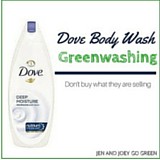After living in University residence for a year and eating "meat" in the cafeteria I decided to become a vegetarian. I was a horrible vegetarian. I didn't miss meat I just did not like a lot of the substitutes like tofu and legumes. So after 3 years I slowly added meat back into my diet (starting with bacon because come on...it's bacon). We all know that meat has a huge carbon footprint so if we are going to eat meat we all need to find ways to reduce this footprint. We also need to look for alternatives that ensure we are not putting toxic substances into our bodies.
There is a lot of green washing with meat. In Ontario there is the big ad campaign to buy Ontario corn fed beef because they claim it is better than non corn fed beef. If you have watched Food Inc. you know this is total BS and that cows can not even digest corn. You want to look for beef that is grass fed and allowed to graze rather than being confined all day.
I know when I am buying meat I am often faced with the decision of picking organic OR antibiotic/hormone free meat. I find it very hard to find both together and apparently there is a reason for this. Sometimes when meat is labeled organic it means they are raised without the use of antibiotics and hormones. Sometimes it also means that they are fed an organic based diet (ie: the grass they graze on is not treated with pesticides or fertilizers).
When meat (or any food) is labeled (and certified) as organic it does not mean it is 100% organic. Interesting eh? I learned this about milk last year when Joe's colleague talked to him about the BS in the organic milk industry but I didn't realize that it extended to all branches of the food industry. Both the USA and Canada use very similar certification systems which is really nice for the consumer.
USDA Organic Seal Classifications
* 100% Organic = 100% organic ingredients
* Organic = at least 95% organic ingredients
* Made with Organic Ingredients = 70-95% organic ingredients and the remaining percentage are GMO free
* Those products made with less than 70% organic ingredients can only make organic claims in the product ingredient list.
Source
Canadian Organic Certification
* Organic = at least 95% organic ingredients (can use organic logo)
* Made with x% Organic Ingredients = 70-95% organic ingredients (can not use the organic logo)
* Those products made with less than 70% organic ingredients can only make organic claims in the product ingredient list. (can not use the organic logo)
There are several organic labels in Canada so look for them here and here are the Regulations
There are some words to watch for in meat labeling because while they seem to mean good things they can be misleading.
Natural - this just means that there are no artificial ingredients or colours added and that there is minimal processing involved.
Hormone Free - for poultry and pork this basically means very little because hormones are not allowed to be added. So if you see it on a label it should also include the wording about how federal regulations prohibit the use of hormones. For beef it means that no hormones have been used in raising the cattle.
Free Range - this means that the animals have access to the outdoors not that they spend all their time out there.
One of the best decisions you can make when it comes to meat is to ask questions. Find a farmer or butcher that you trust and ask the questions you need to to feel comfortable with what you are eating. We are lucky because we are in prime farming country and have access to a lot of reputable sustainable farmers.
What do you look for in meat? Do you find the labels confusing?
Related Posts - Check them Out
Vote for Us Once a Day!










Thank you for sharing and educating us! I read about the differences a while ago and realized that I don't think I have ever found a product that said 100% organic, but I will keep looking!
ReplyDeleteI don't know if I have ever seen one either Katie. They hunt is on!!!
ReplyDelete